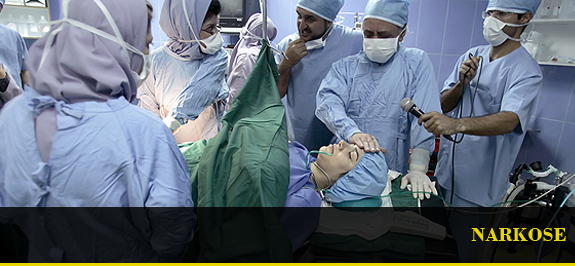Bestuur onder die invloed is meer as net bestuur na die inname van alkohol!
24
July
Ons is heel dikwels geneig om te dink aan dronkbestuur of bestuur onder die invloed as net bestuur na die inname van alkohol. Die wetgewing omvat egter veel meer – en sluit ook in die bestuur onder die invloed van ‘n bedwelmende middel.
Ek het hierdie weer opnuut besef na ‘n besoek aan die hospitaal verlede week. Die narkotiseur het versoek dat ek bepaalde vorms moes invul voordat ek na die teater geneem is en op een van hierdie vorms moes ek onderteken dat ek besef en aanvaar dat die bestuur van ‘n voertuig binne 24 uur na ‘n operasie onwettig is!
Ek het bietjie verder navraag gedoen en gevind dat die wetgewing bestuur onder die invloed breedvoerig omskryf. Art 65 bepaal dat mens nie mag ry as jy enige dwelm wat ‘n narkotiese uitwerking het, in jou stelsel het nie. Dwelm sluit ook in medisyne en narkose.
Vind hiermee die volledige omskrywing in Engels:
Sec 65. Driving while under the influence of intoxicating liquor or drug having narcotic effect, or with excessive amount of alcohol in blood or breath
(1) No person shall on a public road—
(a) drive a vehicle; or
(b) occupy the driver’s seat of a motor vehicle the engine of which is running,
while under the influence of intoxicating liquor or a drug having a narcotic effect.
(2) No person shall on a public road—
(a) drive a vehicle; or
(b) occupy the driver’s seat of a motor vehicle the engine of which is running,
while the concentration of alcohol in any specimen of blood taken from any part of his or her body is not less than 0,05 gram per 100 millilitres, or in the case of a professional driver referred to in section 32, not less than 0,02 gram per 100 millilitres.
(3) If, in any prosecution for an alleged contravention of a provision of subsection (2), it is proved that the concentration of alcohol in any specimen of blood taken from any part of the body of the person concerned was not less than 0,05 gram per 100 millilitres at any time within two hours after the alleged contravention, it shall be presumed, in the absence of evidence to the contrary, that such concentration was not less than 0,05 gram per 100 millilitres at the time of the alleged contravention, or in the case of a professional driver referred to in section 32, not less than 0,02 gram per 100 millimetres, it shall be presumed, in the absence of evidence to the contrary, that such concentration was not less than 0,02 gram per 100 millilitres at the time of the alleged contravention.
(4) Where in any prosecution in terms of this Act proof is tendered of the analysis of a specimen of the blood of any person, it shall be presumed, in the absence of evidence to the contrary, that any syringe used for obtaining such specimen and the receptacle in which such specimen was placed for despatch to an analyst, were free from any substance or contamination which could have affected the result of such analysis.
(5) No person shall on a public road—
(a) drive a vehicle; or
(b) occupy the driver’s seat of a motor vehicle the engine of which is running,
while the concentration of alcohol in any specimen of breath exhaled by such person is not less than 0,24 milligrams per 1 000 millilitres, or in the case of a professional driver referred to in section 32, not less than 0,10 milligrams per 1 000 millilitres.
(6) If, in any prosecution for a contravention of a provision of subsection (5), it is proved that the concentration of alcohol in any specimen of breath of the person concerned was not less than 0,24 milligrams per 1 000 millilitres of breath taken at any time within two hours after the alleged contravention, it shall be presumed, in the absence of evidence to the contrary, that such concentration was not less than 0,24 milligrams per 1 000 millilitres at the time of the alleged contravention, or in the case of a professional driver referred to in section 32, not less than 0,10 milligrams per 1 000 millilitres, it shall be presumed, in the absence of evidence to the contrary, that such concentration was not less than 0,10 milligrams per 1 000 millilitres at the time of the alleged contravention.
(7) For the purposes of subsection (5) the concentration of alcohol in any breath specimen shall be ascertained by using the prescribed equipment.
(8) Any person detained for an alleged contravention of any provision of this section shall not—
(a) during his or her detention consume any substance that contains alcohol of any nature, except on the instruction of or when administered by a medical practitioner;
(b) during his or her detention smoke until the specimen referred to in subsection (3) or (6) has been taken, as the case may be.
(9) No person shall refuse that a specimen of blood, or a specimen of breath, be taken of him or her.
Versekering en bestuur onder die invloed
Uit die oogpunt van versekering is dit belangrik om in ag te neem dat jou motorversekering net dekking sal verleen waat jy hou binne die Padreëls en dat dronkbestuur dus jou motorversekering ongeldig sal maak. Dit is egter dus nie net bestuur na die inname van alkohol nie – maar ook bestuur na ‘n operasie waartydens jy onder narkose was.
Maak dus seker dat wanneer jy ‘n operasie ondergaan en onder narkose geplaas word – hoe gering die operasie ook mag wees – dat jy ‘n bestuurder kry om jou huis toe te neem na die tyd!



